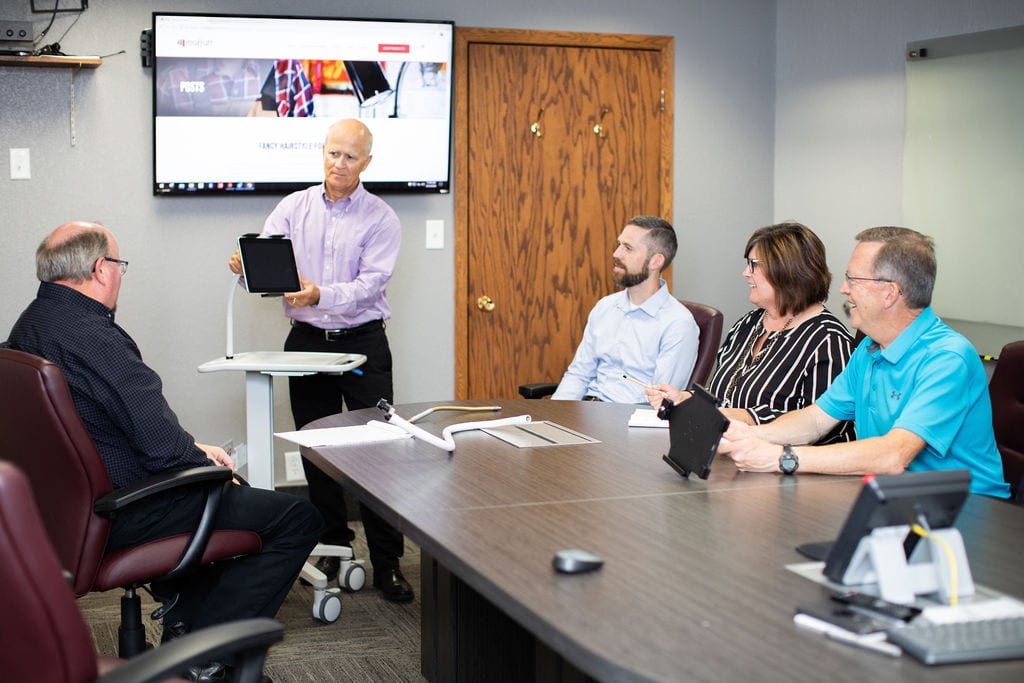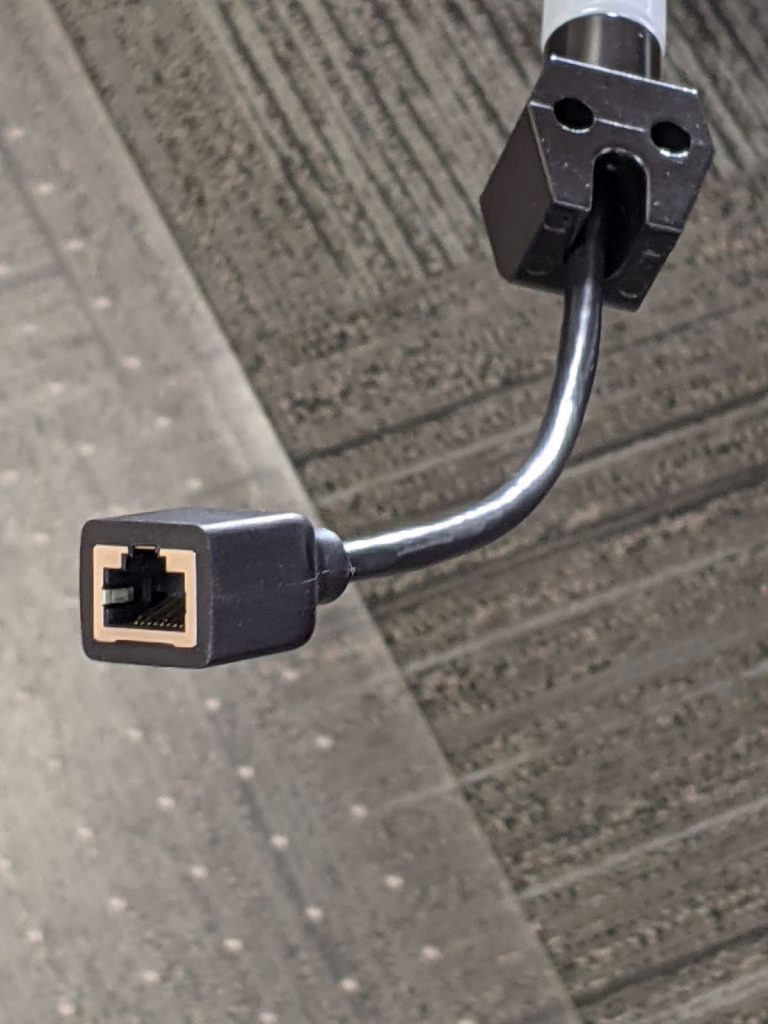4 Ways We Meet Demand During High Volume Flex Arm Production

Share:
Moffatt Products is blessed to work with all sorts of clients — from prototyping with small startups to high volume production for large medical equipment and device manufacturers. Each of these projects requires unique solutions, but one thing we get asked about a lot is: how is a company like Moffatt Products equipped to handle high volume production for flex arm devices. Fortunately, we’re a design firm equipped to manufacture in-house.
Utilizing lead times during the planning for high volume flex arm production
Big or small, every project we take on starts at the same place: with an idea. Our clients come to us at a variety of stages, but there’s always a cadence to how these projects go. In simplest terms, it might look like this.

- Planning
- Partner with an engineer
- Production
Each of these stages has a certain amount of lead time. This time period is crucial for us to get vital information from our clients. What are they looking for? How familiar are they with a flex arm? How does it integrate with their device? What are the requirements for prototypes? How many units will they need, both now and in the future.
We need to know where we’ll be at in a month or two months just as much as where we are at today. It’s realistic for us to be able to produce, say, 10,000 a month — but it might require some additional planning on our part. Utilizing that lead time allows us to change our footprint at the plant, hire additional workers, or do anything else we might need to meet that type of production.
Communication with the client during prototyping for high volume production

We’re lucky that our customers are sophisticated and are typically ready for the hurdles that come with high volume flex arm production. With larger companies, there are often many regulatory procedures that have to take place, minimum requirements that must be exceeded, and general safety regulations and inspections that must be passed. This isn’t just for medical technology (though they often have the most stringent requirements). No matter the industry — whether it’s the FDA or UL – it’s a requirement that these regulations are fulfilled.
Usually, that means we’ll have a good enough time frame to ramp up production. During that time, we believe that clear, thoughtful communication is the best way to get optimum results. It allows us to communicate clear timelines to our component manufacturers, gives us flexibility with the production process, and can oftentimes lead to unexpected solutions.
Understand your regulation types before high volume flex arm production
As we said, med-tech products typically have the most stringent regulatory procedures, but they’re far from being the only industry that requires them. We work with companies that do business across the globe. Here is a list of some of the more important regulatory agencies that we’ve successfully complied with
Underwriters Laboratories – An independent testing company that works with companies that have electrical components. It’s vitally important that any lamp or electrical lighting fixture would need to have the UL stamp of approval.
CEC – The California Energy Commission is often used as the standard for testing energy efficiency. They’ll measure Lumen output and Wattage efficiency to make sure that your product is compliant with any energy requirements. CEC is considered the benchmark for Energy efficacy testing, so often if you’ve met CEC compliance, you’re good across the board.
ROHS – ROHS (pronounced like Rojas) is a European regulatory agency that tests the level of carcinogens in a product. Their standards are high but are required to sell products in Europe — which is why the rest of the world typically falls in line (and why they’re so important).
FDA-Many of our components have FDA approval requirements as part of medical devices. If we are designing components for our customers in the medical industry, we ensure the U.S. Food and Drug Administration will approve their safety in healthcare settings.
This is by no means a comprehensive list, but it gives you the idea of what information we’ll need before production to make sure that our components meet those standards. If we have a clear picture of the product, how it will be used, the environment it will be used in, and where it will be sold, we’ll create a plan on how to meet those requirements on the initial design — and be able to plan our production process accordingly.
Communication with our vendors during high volume flex arm production
Did we mention communication is important? It is. We see ourselves not as a flex arm company, but as a solutions company. Sometimes that means finding solutions to unforeseen problems — that happens best when we’re able to make sure that we have great lines of communication with our vendors.
COVID-19 exposed the vulnerability and the power of supply chains. It’s important to make sure that components are available when we need them. There’s a lot of back and forth with our vendors to make sure that this happens. We need to have a good handle on that so we can understand what our production capabilities will be.
In the unlikely event that there’s a snag or a hiccup, this needs to be communicated to our client immediately. That’s a fluid conversation. It might mean that we are able to make X number one week, and a different number the next. There’s a great coordination effort that happens between all parties to be able to communicate these numbers rapidly.
That’s just one reason why we believe that it’s so important to treat everyone with dignity and respect. Clients, vendors, and end-users are all integral parts of the process of creating a device that works for everyone. Do you have a product that you want to ramp up production on? We’d love to be a part of your story. Give us a call and see how we can help!
_____________________
Working on a flex arm design? We are here for a no-pressure phone call. We’d love to hear more about what you are working on and give you ideas and prototypes to improve your decision-making process. Give us a call, we promise it will be worth your while.
